Science: Individual tracking reveals long-distance flight-path control in a nocturnally migrating moth
(个体追踪揭示了一种夜行性迁飞蛾类的远距离飞行路径控制策略)
每年数以万亿计昆虫进行远距离的季节性迁飞。虽然人们对种群水平上的昆虫迁飞有一定了解,但单头昆虫是如何完成这种大尺度迁飞仍不清楚。由于追踪单头昆虫的难度巨大,对个体迁飞途中条件的行为反应研究很少。本研究利用轻型飞机和个体无线电追踪技术,揭示了夜间迁飞的鬼脸天蛾在长距离飞行过程中保持对飞行轨迹的控制。这些飞蛾不仅在风向有利时顺风飞行,在某个夜晚,他们还针对侧风调整头部以保持航线。整个飞行过程中,风的强度和方向经常变化,这些飞蛾采取了一系列飞行策略来应对多变的风力条件。当风向有利时,好风凭借力,它们飞得又高又慢;遇到恶劣的逆风或侧风,它们就会飞得很低,并加快速度,不断控制自己的航向。这种行为表明,这些天蛾使用了一个复杂精密的内部罗盘,以保持独立于风况的季节性有益的迁飞轨迹,揭示了昆虫如何进行长距离飞行以充分利用季节性资源。
个体追踪揭示了迁飞天蛾始终保持直线飞行路径
Individual tracking reveals consistently straight flight paths in migrating hawkmoths.
(A)鬼脸天蛾(A. atropos):典型骷髅状标记(左)和装有微型VHF无线电发射器后的形态(重量为240毫克)(右)。(B) 欧洲地图,标出了追踪区域(放大图见(C));释放点位于瑞士阿尔卑斯山以北约50公里处。(C) 迁飞天蛾的夜间轨迹,显示它们在一夜飞行中始终保持直线轨迹。实线表示整夜跟踪的飞蛾,虚线表示在随后的搜索中定位到飞蛾位置的推测轨迹。颜色表示不同的个体,在所有其他图中颜色标识一致。(D) 表示14头表现出迁徙行为的飞蛾的平均航迹方向。每个点表示一头飞蛾的航迹方向。箭头表示总平均方向(208.70°),箭头长度表示定向性(r = 0.917)。(E) 表示持续追踪7头迁飞中的飞蛾的每10个地速类别中的航迹段的频率分布(每个柱子代表2米/秒的范围)(n = 99)。虚线表示9.4米/秒的平均值。【照片来源:Christian Ziegler】。
(A) Death’s-head hawkmoth (A. atropos) showing the characteristic skull-like marking (left) and fitted with a miniaturized VHF radio transmitter (weighing 240 mg) (right). (B) Map of Europe with the tracking region outlined [magnified view shown in (C)]; the release site was ~50 km north of the Swiss Alps. (C) Nighttime tracks of migrating hawkmoths showing persistently straight trajectories throughout a night’s flight. Solid lines indicate moths that were tracked continuously throughout a night, and dashed lines indicate presumed tracks of moths to their relocation position during searches in the following day(s). Colors represent different individuals and are consistent between figures. (D) Mean track directions of the 14 moths that demonstrated migratory behavior. Each point represents the track direction of an individual moth. The arrow indicates the overall mean direction (208.70°), and arrow length indicates the directedness (r = 0.917). (E) Frequency distribution of track segments in each of 10 ground-speed categories (each bar represents a range of 2 m/s) for the seven moths that were tracked continuously on migration (n = 99 segments). The dashed line indicates the mean of 9.4 m/s. [Photo credit: Christian Ziegler].
迁飞天蛾在应对风力条件时的飞行策略
Strategies of migrating hawkmoths in relation to winds.
该研究通过分析图1中每头飞蛾的各个轨迹段中偏差角β的分布(β为轨迹(T)和风向(W)的差值)探究鬼脸天蛾应对沿途遇到的风时的飞行行为。(A)在不利条件下,如逆风和多变风条件下,飞蛾的β分布95%置信区间重叠在180度,表明它们通过选择直接朝逆风的方向飞行来补偿漂移并保持向南的航迹。在有利条件下(即向西南方向吹的风),飞蛾表现出两种策略。如(B)所示,一些飞蛾的β均值约为45度,95%的置信区间不与0度重叠,表明它们部分补偿漂移以更接近向南的方向迁飞,而如(C)所示,飞蛾5的β分布与0度重叠,表明它更多地沿着顺风方向直线飞行。在环形图中,每个点表示每头飞蛾轨迹段的β值。箭头表示β的总体均值,箭头长度(r)表示围绕平均值的聚类程度。【插图来源:H. J. Williams】。
The flight behavior of migrating A. atropos in relation to winds encountered along the route was explored by analyzing distributions of the angle of deviation [β, the difference between the trajectory (T) and the wind direction (W)] for each segment of the trajectories of the individual moths shown in Fig. 1. (A) In unfavorable conditions such as headwinds and variable winds, moths had distributions of β with 95% CIs that overlapped 180° in all cases (table S1), indicating that they compensated for drift and maintained a southward track by selecting a flight heading (H) directly upwind. (B and C) Under favorable conditions (i.e., winds blowing toward the southwest), moths showed one of two strategies. As shown in (B), some moths had mean values of β around 45° and 95% CIs that did not overlap with 0° (table S1), indicating that they partially compensated for drift to migrate closer to south than the downwind flow would transport them. As shown in (C), moth 5 had a distribution of β that overlapped with 0° (table S1), indicating that it headed more-or-less straight downwind. On the circular plots, each point represents the value of β for all trajectory segments of each moth. The arrow indicates the overall mean value of β, and arrow length (r) indicates the degree of clustering around the mean. [Illustration credit: H. J. Williams].
Each year, trillions of insects make long-range seasonal migrations. These movements are relatively well understood at a population level, but how individual insects achieve them remains elusive. Behavioral responses to conditions en route are little studied, primarily owing to the challenges of tracking individual insects. Using a light aircraft and individual radio tracking, we show that nocturnally migrating death’s-head hawkmoths maintain control of their flight trajectories over long distances. The moths did not just fly with favorable tailwinds; during a given night, they also adjusted for head and crosswinds to precisely hold course. This behavior indicates that the moths use a sophisticated internal compass to maintain seasonally beneficial migratory trajectories independent of wind conditions, illuminating how insects traverse long distances to take advantage of seasonal resources.
编辑:张颖
原文信息:Myles H. M. Menz et al., (2022) Individual tracking reveals long-distance flight-path control in a nocturnally migrating moth. Science Doi: 10.1126/science.abn1663


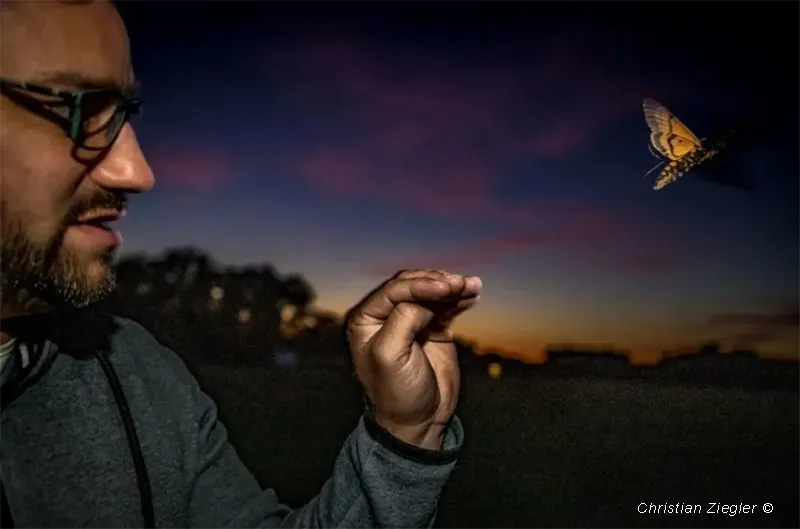
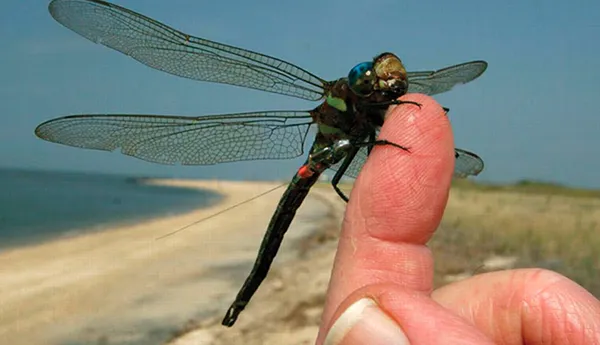
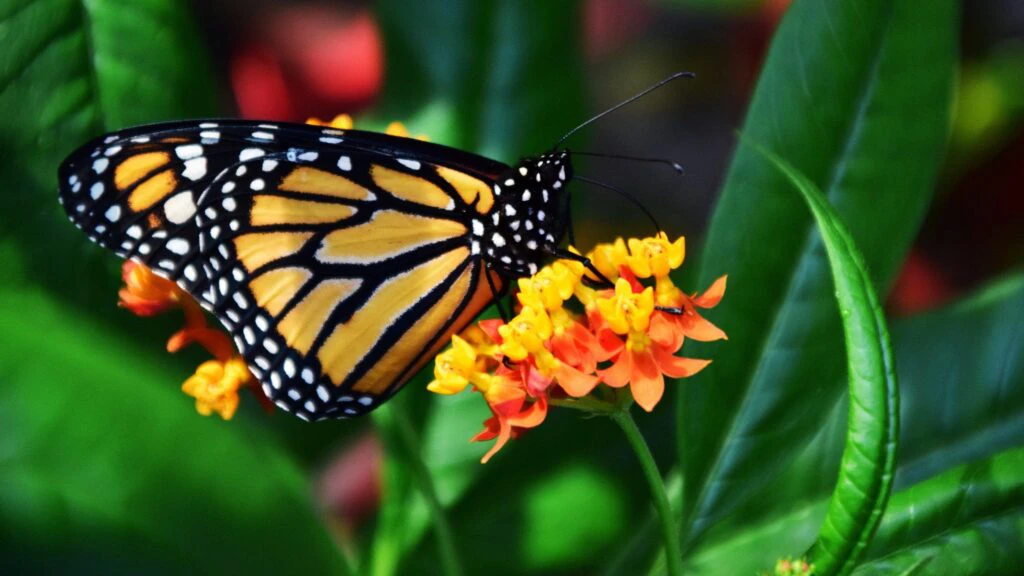

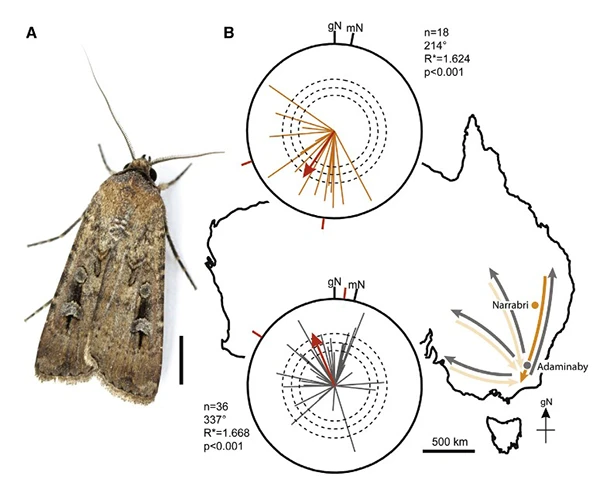
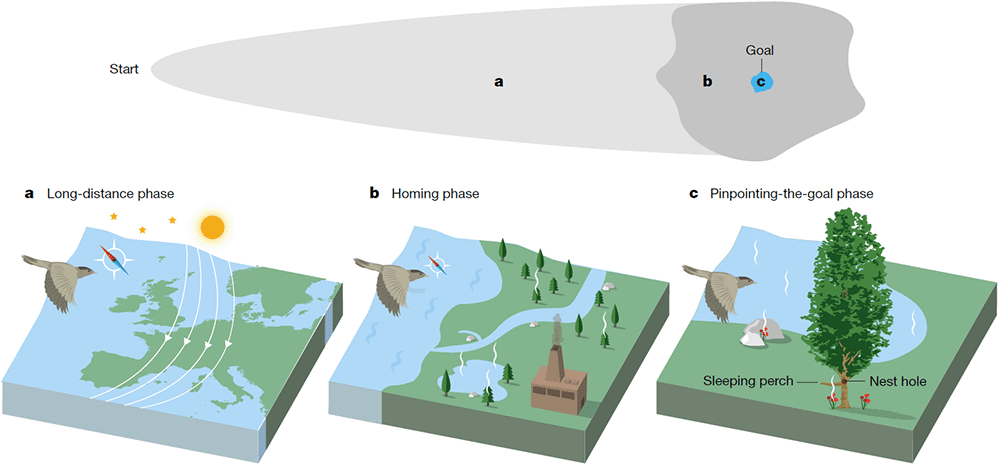
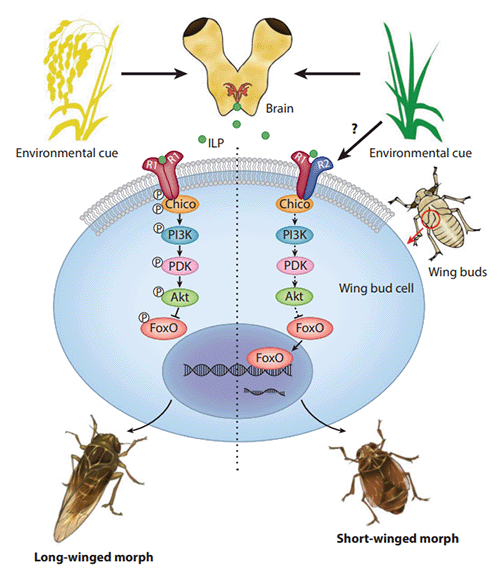
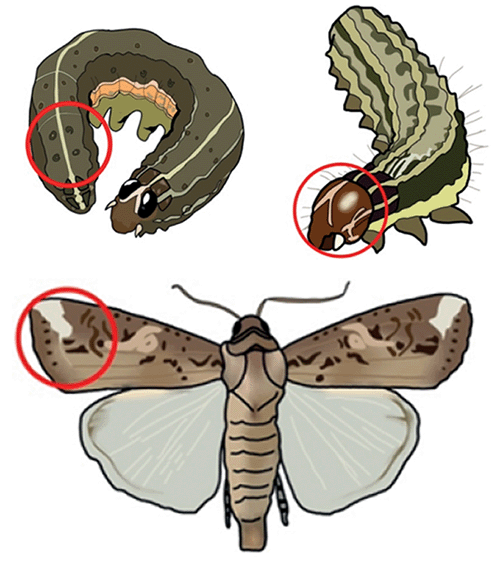


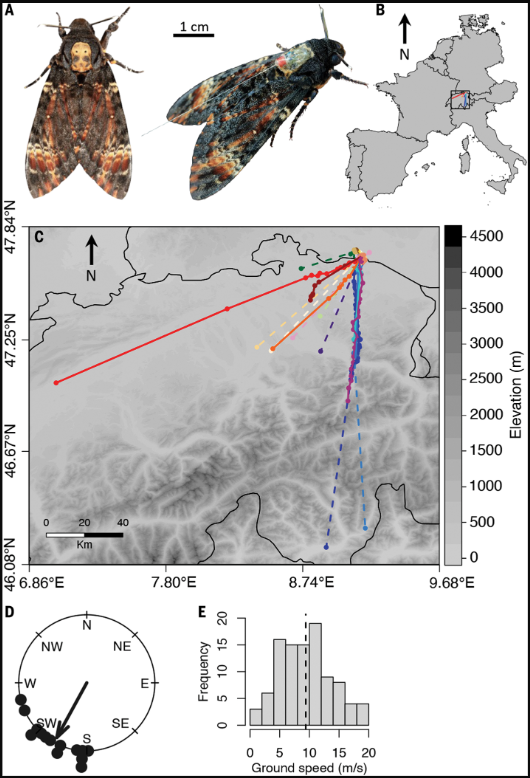
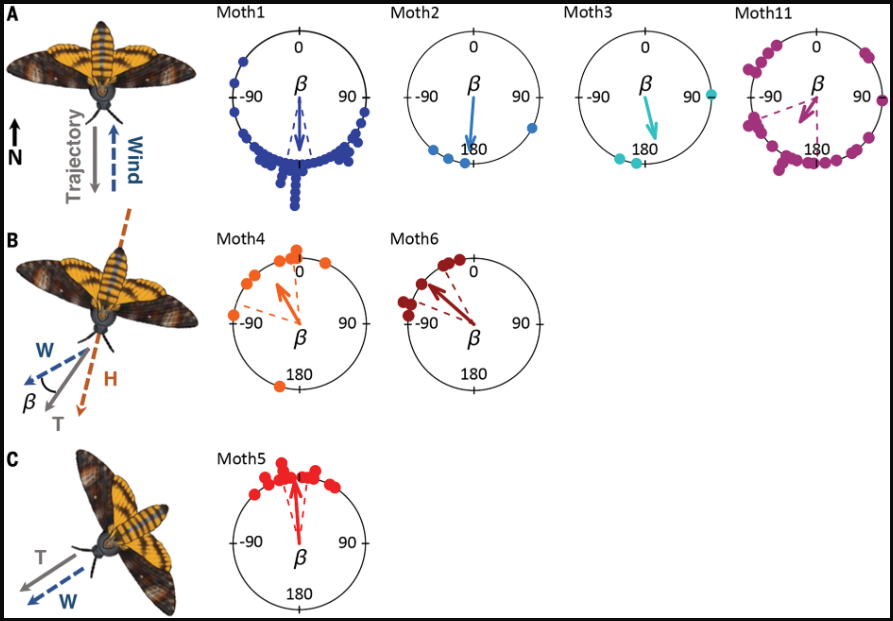

发表回复